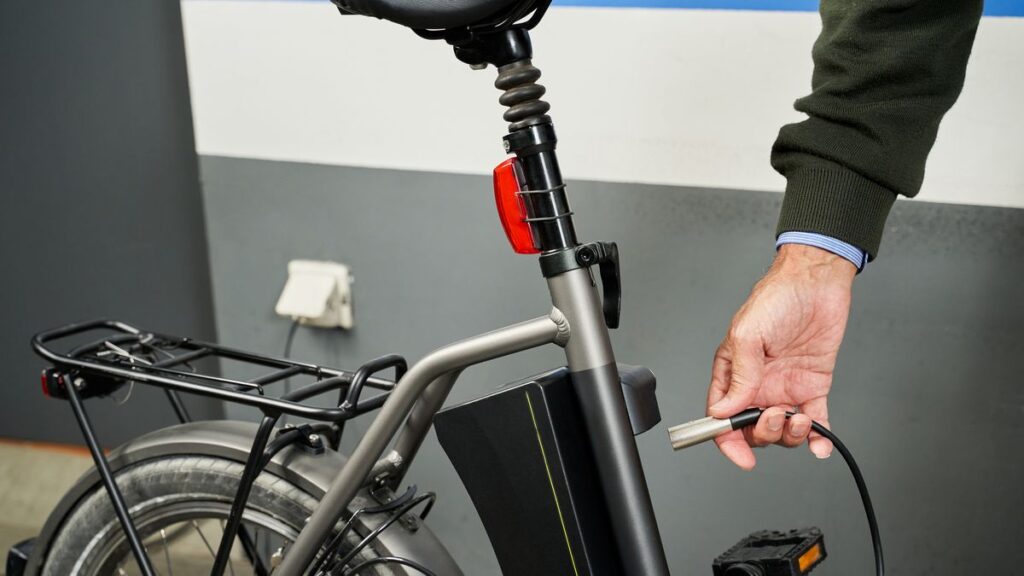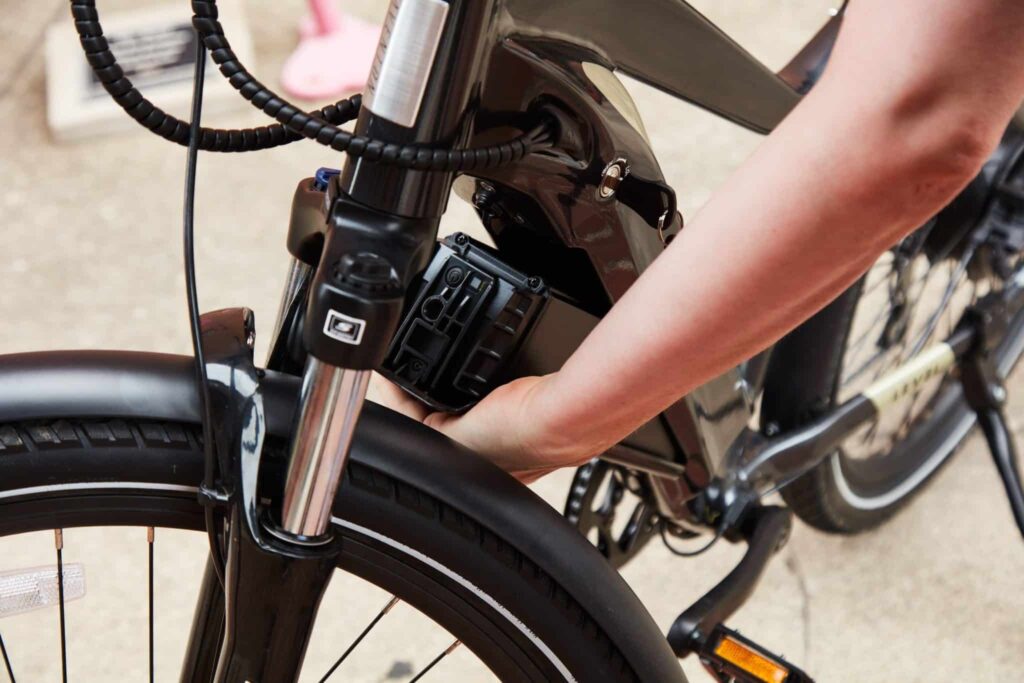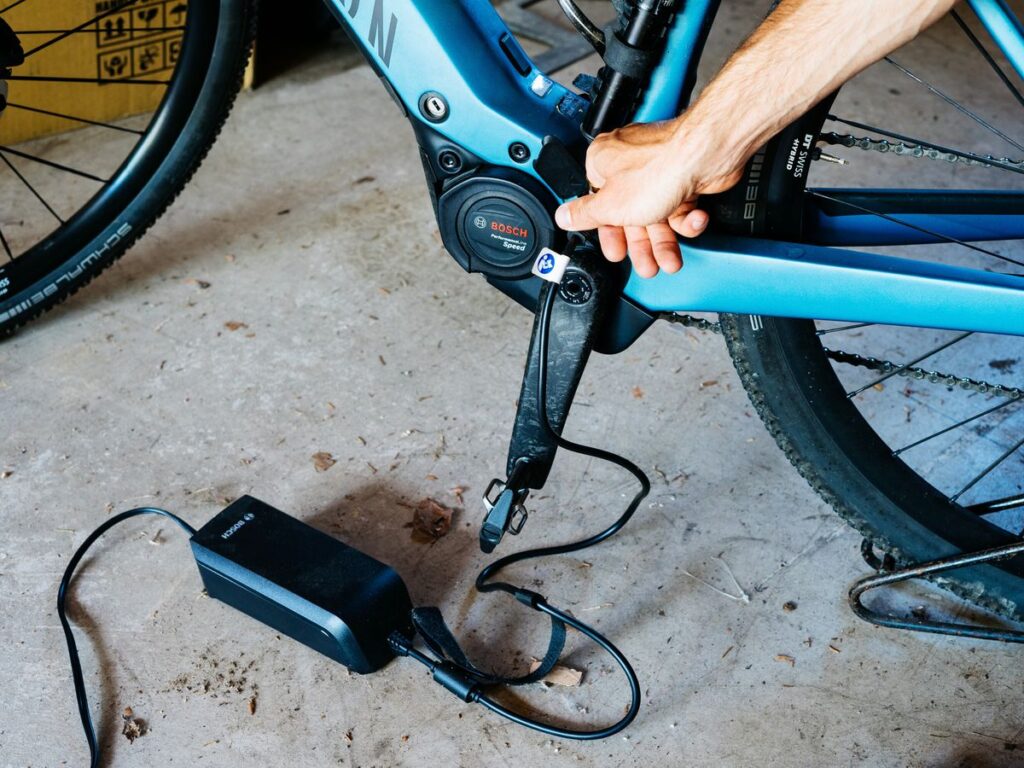If you’re an electric bike owner, you already know the joys of gliding effortlessly through the streets, powered by the silent hum of your battery. But to keep the joy ride going, it’s important to properly maintain your electric bike’s battery. In our comprehensive maintenance guide, we’ll cover everything you need to know to ensure your battery’s safety and longevity. From simple cleaning techniques to expert advice, we’ll guide you through the steps to keep your e-bike performing at its best, whether you’re a newbie or a seasoned rider. So buckle up, and let’s dive into the world of electric bike battery maintenance!

Step 1: Regularly Clean the Battery
To ensure the safety and longevity of your electric bike’s battery, it is important to regularly clean it. This will help remove dirt, dust, and any other debris that may accumulate on the battery over time.
Tools and materials needed
To clean the battery, you will need the following tools and materials:
- Soft cloth or sponge
- Mild soap or specialized battery cleaning solution
- Water
- Brush with soft bristles
- Disposable gloves (optional)
Cleaning process
Here is a step-by-step process to effectively clean the battery:
- Begin by wearing disposable gloves, if desired, to protect your hands.
- Mix mild soap or specialized battery cleaning solution with water in a bucket or container.
- Dip the soft cloth or sponge into the soapy water solution and gently wipe the exterior of the battery. Be careful not to let any water or solution seep into the battery’s openings.
- For hard-to-reach areas or stubborn dirt, use a brush with soft bristles to lightly scrub the surface of the battery.
- Once the battery is clean, rinse it thoroughly with clean water to remove any soap residue.
- Use a dry cloth or allow the battery to air dry completely before reconnecting it to your electric bike.
Maintenance tips
To maintain a clean battery, consider the following tips:
- Clean the battery at least once a month, or more frequently if you ride your electric bike in dusty or dirty conditions.
- Avoid using harsh chemicals or abrasive materials when cleaning the battery, as this can damage its exterior.
- Inspect the battery for any signs of corrosion or rust, and consult a professional if you notice any issues.
Regularly cleaning your electric bike’s battery will help prevent the accumulation of debris and ensure its optimal performance.
Step 2: Check the Battery Connections
Checking the battery connections is crucial to ensure that your electric bike’s battery is properly connected and functioning correctly. Loose or damaged connections can lead to poor performance or even a complete power failure.
Inspecting the connections
To inspect the battery connections, follow these steps:
- Begin by turning off the electric bike and removing the battery.
- Carefully examine the battery terminals and the corresponding connectors on the bike.
- Look for any signs of corrosion, loose wires, or damaged connectors. Corrosion can appear as a powdery substance on the terminals and connectors.
Tightening loose connections
If you find any loose connections, here’s how you can tighten them:
- Using an appropriate tool, such as a wrench or pliers, gently tighten the screws or bolts securing the connectors.
- Take care not to overtighten, as this can damage the connectors or strip the threads.
Replacing damaged connectors
If you discover any damaged connectors or wires, it is best to replace them to ensure proper functionality. Consult a professional or refer to your electric bike’s user manual for guidance on replacing connectors.
Regularly checking and maintaining the battery connections will help prevent any potential electrical issues and ensure a reliable power supply for your electric bike.
Step 3: Monitor the Battery Temperature
Proper temperature management is essential for maintaining the health and performance of your electric bike’s battery. Extreme temperatures, whether too hot or too cold, can significantly impact the battery’s lifespan and overall capacity.
Understanding optimal temperature range
Most electric bike batteries perform optimally within a temperature range of 10 to 35 degrees Celsius (50 to 95 degrees Fahrenheit). However, it is essential to refer to your specific battery model’s guidelines for the recommended temperature range.
Avoiding extreme temperature conditions
To protect the battery from extreme temperature conditions:
- Do not expose the battery to direct sunlight for extended periods, particularly in hot weather.
- Avoid storing or charging the battery in freezing temperatures.
- If you must ride your electric bike in extreme weather, try to park it in a shaded area or indoors when not in use.
Using insulation or cooling devices
During hot or cold weather conditions, you can use insulation or cooling devices to help regulate the battery’s temperature:
- Insulation: Wrap the battery with insulation material, such as foam, to provide additional protection and maintain a more stable temperature.
- Cooling devices: Consider using battery-specific cooling fans or coolers to help dissipate heat during periods of intensive use or in hot weather conditions.
By monitoring and managing the battery’s temperature, you can ensure its optimal performance and prolong its lifespan.
Step 4: Charge the Battery Correctly
Properly charging your electric bike’s battery is crucial for maintaining its overall health and maximizing its lifespan. Follow these guidelines to ensure a safe and efficient charging process.
Using the right charger
Always use the charger provided by the manufacturer or a charger recommended for your specific electric bike battery model. Using an incorrect charger can cause damage to the battery and may even pose safety hazards.
Avoiding overcharging
Overcharging the battery can lead to reduced capacity and shortened lifespan. To avoid overcharging:
- Follow the recommended charging time provided by the manufacturer or indicated in the user manual.
- Once the battery is fully charged, disconnect it from the charger promptly.
Charging in a well-ventilated area
When charging your electric bike’s battery, ensure that the charging area is well-ventilated to prevent the buildup of heat. Avoid charging the battery in enclosed spaces or near flammable materials.
Proper charging practices will not only extend your battery’s lifespan but also contribute to the overall safety and performance of your electric bike.

Step 5: Store the Battery Properly
Proper storage of your electric bike’s battery when not in use is essential to maintain its performance and prevent potential damage. Follow these guidelines to ensure the battery remains in optimal condition during periods of non-use.
Choosing the right storage location
When storing the battery:
- Choose a cool, dry, and well-ventilated location.
- Avoid storing the battery in direct sunlight or near sources of heat.
- Ensure the storage area is away from any flammable materials.
Disconnecting the battery when not in use
If you won’t be using your electric bike for an extended period, it is recommended to disconnect the battery from the bike. This helps prevent any drain on the battery and avoids potential issues caused by long-term inactivity.
Periodic maintenance during storage
While your electric bike’s battery is in storage, it is important to conduct periodic maintenance to keep it in good condition:
- Charge the battery to approximately 50% capacity every few months to prevent deep discharge.
- Inspect the battery for any signs of physical damage, corrosion, or leaks.
- If any issues are detected, consult a professional before using the battery again.
By storing your electric bike’s battery properly and conducting periodic maintenance, you can ensure its longevity and have it ready for use whenever you’re back on the road.
Step 6: Perform Regular Battery Health Checks
Regularly checking the health of your electric bike’s battery will help you identify any potential issues and address them promptly. Here are some essential battery health checks you should perform.
Testing the battery voltage
You can test the battery voltage using a multimeter or a battery voltage tester. Follow these steps:
- Turn off your electric bike and disconnect the battery.
- Set your multimeter or battery voltage tester to the DC voltage setting.
- Touch the positive (+) probe to the positive (+) terminal on the battery and the negative (-) probe to the negative (-) terminal.
- Read the voltage displayed on the multimeter or tester.
Compare the measured voltage with the manufacturer’s recommended voltage for your specific battery model.
Inspecting for physical damage
Regularly inspect your battery for any signs of physical damage, including cracks, dents, or bulges. If you notice any damage, it is important to consult a professional and refrain from using the battery until it is deemed safe.
Monitoring overall battery performance
Pay attention to any changes in your electric bike’s battery performance over time. If you notice a significant decrease in battery life or power output, it may indicate a need for professional inspection or potential battery replacement.
By performing regular battery health checks, you can catch any issues early on and take appropriate action to maintain the optimal performance and safety of your electric bike’s battery.

Step 7: Protect the Battery from Water and Moisture
Water and moisture can severely damage the battery of an electric bike. To ensure the longevity and safety of your battery, take the following precautions.
Using waterproof battery covers
Consider using waterproof battery covers or cases to protect your battery from splashes, rain, or other sources of water or moisture. These covers are designed to shield the battery and minimize the risk of water damage.
Avoiding submerging the battery in water
Never intentionally submerge your electric bike’s battery in water, as this can cause irreparable damage and pose a safety hazard. Avoid riding your bike through deep puddles, waterlogged areas, or crossing bodies of water.
Drying and cleaning after exposure to moisture
If your electric bike or battery has been exposed to moisture, it is important to dry and clean them properly:
- Turn off the electric bike and remove the battery.
- Use a dry cloth to wipe away any excess moisture from the battery and the bike’s components.
- Allow the battery and bike to air dry completely before reassembling or charging.
Taking these precautions will help protect your electric bike’s battery from water and moisture damage, ensuring its longevity and optimal performance.
Step 8: Avoid Overloading the Battery
Understanding the maximum weight capacity of your electric bike is crucial to avoid overloading the battery. Excessive weight can strain the battery and reduce its range and overall performance. Follow these guidelines to prevent overloading.
Understanding the maximum weight capacity
Check your electric bike’s user manual or consult the manufacturer to determine the maximum weight capacity. This includes the weight of the rider, any additional cargo, and accessories.
Reducing unnecessary weight on the bike
To avoid overloading the battery:
- Evaluate the necessity of any accessories or cargo before adding them to your electric bike.
- Remove any unnecessary items or accessories that add excessive weight.
- If carrying cargo, distribute the weight evenly across the front and rear of the bike.
Distributing weight evenly
Balancing the weight distribution on your electric bike helps prevent excessive strain on the battery and ensures a more stable and comfortable riding experience. Place heavier items closer to the center of the bike and distribute the weight evenly between the front and rear racks, if applicable.
By avoiding overloading and maintaining a balanced weight distribution, you can optimize your electric bike’s battery performance and extend its overall lifespan.

Step 9: Properly Maintain the Bike’s Electrical System
Maintaining the electrical system of your electric bike is crucial for the proper functioning of the battery and overall performance. Follow these steps to ensure the electrical system is well-maintained.
Inspecting wiring and connections
Regularly inspect the wiring and connections of your electric bike’s electrical system. Look for any signs of damage, loose wires, or exposed connections. If you notice any issues, consult a professional or refer to the user manual for guidance on addressing the problem.
Keeping electrical components clean
Keep the electrical components of your electric bike clean to prevent dust, dirt, or debris from affecting their performance. Use a soft cloth or brush to gently remove any buildup on the connectors, switches, or other electrical parts.
Addressing any electrical issues promptly
If you experience any electrical issues with your electric bike, such as flickering lights, intermittent power, or unusual noises, address them promptly. Continuing to use the bike without addressing these issues can lead to further damage and may compromise the battery’s performance.
Ensure the electrical system of your electric bike is well-maintained to support the health and longevity of the battery, ensuring a smooth and reliable ride.
Step 10: Follow Manufacturer’s Guidelines
To properly maintain your electric bike’s battery, it is crucial to follow the manufacturer’s guidelines and recommendations. This includes adhering to maintenance schedules, procedures, and safety precautions provided in the user manual.
Referencing the user manual
Always refer to your electric bike’s user manual for specific instructions and guidelines on battery maintenance. The manual will provide valuable information tailored to your specific electric bike model.
Following recommended maintenance schedules
Adhere to the manufacturer’s recommended battery maintenance schedules. This may include regular cleaning, inspections, or specific maintenance tasks at designated intervals. Following these schedules will help ensure the optimal performance and longevity of your electric bike’s battery.
Seeking professional assistance when needed
If you are unsure about any maintenance tasks or notice any significant issues with your electric bike’s battery, seek professional assistance. Certified technicians or electric bike experts can provide specialized guidance and address any complex problems.
By closely following the manufacturer’s guidelines, you can effectively maintain your electric bike’s battery and ensure its optimum performance and longevity.
In conclusion, properly maintaining your electric bike’s battery is vital for its safe and efficient operation. The steps outlined in this article will help you keep your battery clean, ensure proper connections, monitor temperature, charge correctly, store appropriately, perform regular health checks, protect from water and overload, maintain the electrical system, and follow manufacturer’s guidelines. By incorporating these maintenance practices into your routine, you can maximize the lifespan and performance of your electric bike’s battery, providing you with many enjoyable rides ahead.




